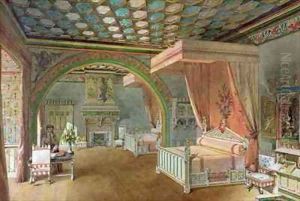Edmond Duthoit Paintings
Edmond Duthoit was a French architect, archaeologist, and artist, recognized for his contributions to the study of Mediterranean and Middle Eastern architecture and artifacts. Born on April 13, 1837, in Amiens, France, Duthoit developed an interest in the arts at a young age, influenced by his father, who was a painter.
Duthoit's early career was marked by his education at the École des Beaux-Arts in Paris, where he studied architecture. His talent and interest in historical structures led him to specialize in restoration work. He was particularly fascinated with the medieval period and the intricate designs of Islamic art and architecture.
In 1865, Duthoit joined the French Archaeological Mission to Lebanon and Syria, which was a turning point in his career. He traveled extensively throughout the Middle East, documenting historic sites and participating in archaeological excavations. His meticulous drawings and observations contributed significantly to the understanding of Islamic art and architecture. Duthoit was known for his dedication to preserving the authenticity of the structures he studied, arguing against the then-common practice of heavy-handed restoration that often altered the original designs.
During his travels, Duthoit became deeply involved in the study of the Crusades and the remaining Crusader castles in the region. His drawings and plans of these sites remain valuable to historians and archaeologists. In addition to his work in the Middle East, Duthoit also explored sites in Turkey and Greece, further broadening his expertise.
Duthoit's contributions to the field of archaeology were not limited to his drawings and excavation work. He also collected artifacts and antiquities, some of which he donated to French museums, enriching their collections of Eastern art.
Tragically, Edmond Duthoit's life was cut short when he died on July 13, 1889, at the age of 52. Although he did not publish extensively, his legacy lives on through his detailed architectural drawings and sketches, which continue to inform and inspire scholars in the fields of art history, archaeology, and architecture to this day.
